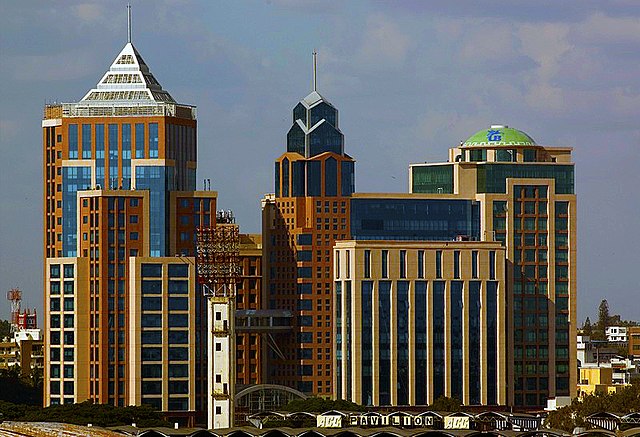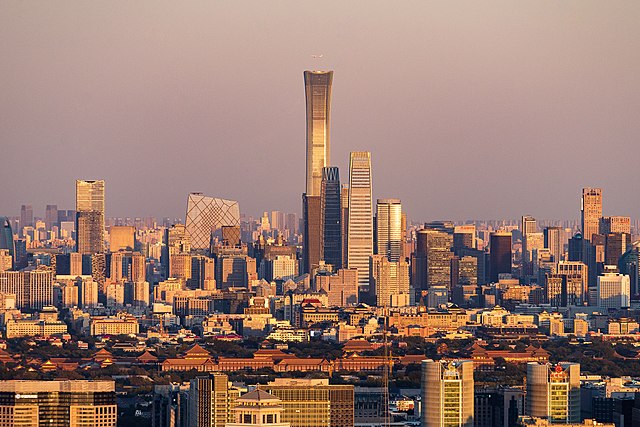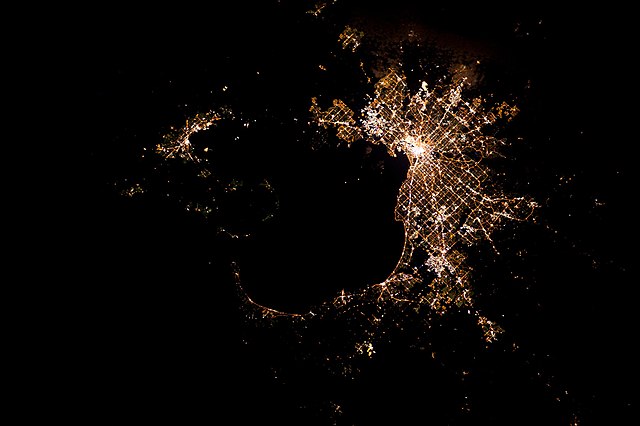A megacity is a very large city, typically with a population of more than 10 million people. The United Nations Department of Economic and Social Affairs in its 2018 "World Urbanization Prospects" report defines megacities as urban agglomerations with over 10 million inhabitants. A University of Bonn report holds that they are "usually defined as metropolitan areas with a total population of 10 million or more people". Elsewhere in other sources, from five to eight million is considered the minimum threshold, alongside a population density of at least 2,000 per square kilometre. The terms conurbation, metropolis, and metroplex are also applied to the latter.
Image: UB City
Image: Skyline of Beijing CBD with B 5906 approaching (20211016171955)
Image: High rises of Puerto Madero (40022145164)
Image: Chennai skyline
A metropolitan area or metro is a region consisting of a densely populated urban agglomeration and its surrounding territories sharing industries, commercial areas, transport network, infrastructures and housing. A metropolitan area usually comprises multiple principal cities, jurisdictions and municipalities: neighborhoods, townships, boroughs, cities, towns, exurbs, suburbs, counties, districts and even states and nations in areas like the eurodistricts. As social, economic and political institutions have changed, metropolitan areas have become key economic and political regions.
Satellite image of the New York metropolitan area, the largest metropolitan area in the United States and one of the largest in the world, with Long Island in the east and Manhattan at the center of the densest part of the image
Greater São Paulo in Brazil seen at night from the International Space Station
The Melbourne metropolitan area in Australia seen at night from the International Space Station
The Downtown Dubai Metropolis








